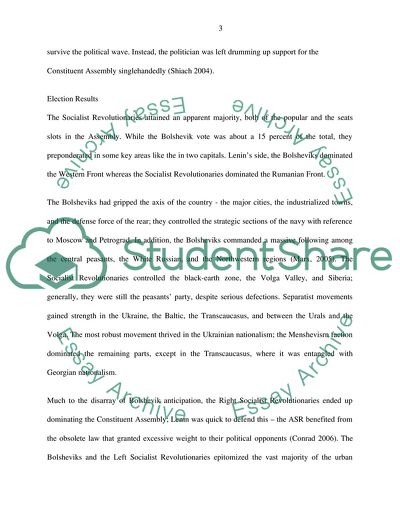Cite this document
(Dissolution of the Russian Constituent Assembly, 19 January 1918 Essay Example | Topics and Well Written Essays - 1500 words, n.d.)
Dissolution of the Russian Constituent Assembly, 19 January 1918 Essay Example | Topics and Well Written Essays - 1500 words. https://studentshare.org/history/1869889-document-commentary-dissolution-of-the-russian-constituent-assembly-19-january-1918
Dissolution of the Russian Constituent Assembly, 19 January 1918 Essay Example | Topics and Well Written Essays - 1500 words. https://studentshare.org/history/1869889-document-commentary-dissolution-of-the-russian-constituent-assembly-19-january-1918
(Dissolution of the Russian Constituent Assembly, 19 January 1918 Essay Example | Topics and Well Written Essays - 1500 Words)
Dissolution of the Russian Constituent Assembly, 19 January 1918 Essay Example | Topics and Well Written Essays - 1500 Words. https://studentshare.org/history/1869889-document-commentary-dissolution-of-the-russian-constituent-assembly-19-january-1918.
Dissolution of the Russian Constituent Assembly, 19 January 1918 Essay Example | Topics and Well Written Essays - 1500 Words. https://studentshare.org/history/1869889-document-commentary-dissolution-of-the-russian-constituent-assembly-19-january-1918.
“Dissolution of the Russian Constituent Assembly, 19 January 1918 Essay Example | Topics and Well Written Essays - 1500 Words”. https://studentshare.org/history/1869889-document-commentary-dissolution-of-the-russian-constituent-assembly-19-january-1918.


